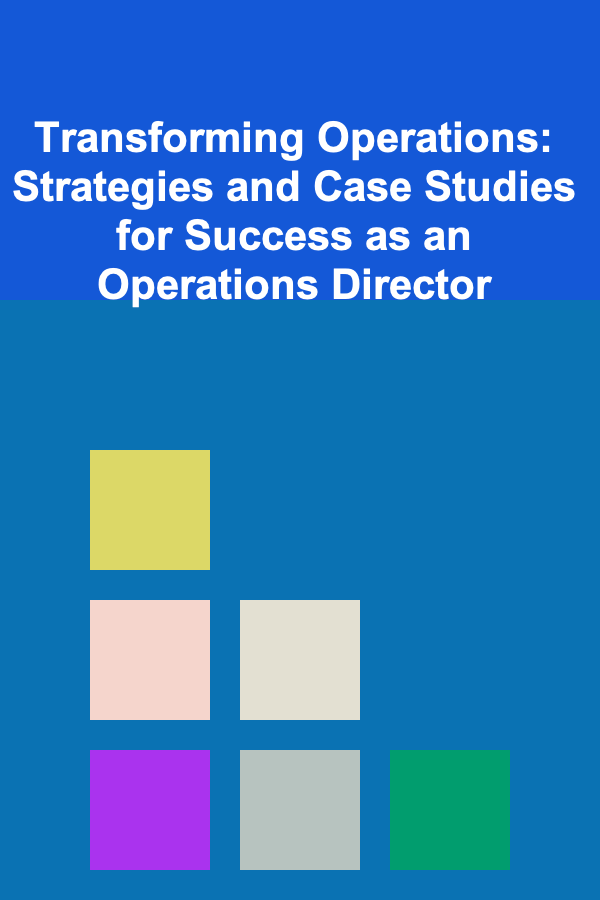
10 To-Do List Items for Job Seekers Returning to the Workforce
ebook include PDF & Audio bundle (Micro Guide)
$12.99$8.99
Limited Time Offer! Order within the next:
Not available at this time

10 To-Do List Items for Job Seekers Returning to the Workforce
Returning to the workforce after a break can feel like a monumental task. Whether you've been away due to personal reasons, raising children, pursuing education, or other life circumstances, the world of work may have evolved during your absence. That's why it's essential to prepare thoroughly for your return to ensure you're competitive, confident, and ready to succeed.
This article will guide you through a 10-step to-do list that will set you up for success as you re-enter the job market. From updating your skills and resume to networking and self-promotion, these actionable steps will help you effectively transition back into the workforce.
1. Assess Your Skills and Experience
The first step in preparing for your return to the workforce is taking stock of your skills, experience, and qualifications. Identify the strengths you gained during your time away from work, whether they are through personal projects, volunteer work, or new interests. Skills like time management, communication, or leadership are often transferable, even if you haven't been employed in a traditional role.
Actionable Steps:
- Reflect on any unpaid or volunteer work you've done. Could these experiences be valuable to potential employers?
- Make a list of skills you've developed that can apply to the job market.
- Identify any gaps in your skill set or experience that could hinder your job search.
2. Update Your Resume and LinkedIn Profile
Your resume and LinkedIn profile are your primary marketing tools as a job seeker. Update them with your most recent experience and any new skills you've gained, even if they're from non-traditional sources. If you've been away from the workforce for an extended period, consider adding a section that explains how your experiences during the gap period (such as freelance work, studies, or caregiving) have contributed to your professional development.
Actionable Steps:
- Revise your resume to reflect your most current job roles and skills.
- Tailor your resume to align with the types of jobs you're seeking.
- Ensure your LinkedIn profile is up to date, including a professional photo, updated work history, and a compelling summary of your career journey.
3. Identify Your Career Goals
When returning to the workforce, it's essential to be clear about what you want. Are you looking for a position similar to your previous role, or do you want to transition into a new field? Understanding your goals will help you focus your job search and identify the right opportunities. Take time to research different industries, roles, and companies to determine what aligns best with your skills, interests, and lifestyle.
Actionable Steps:
- Define the type of job or career you want to pursue.
- Research industries and companies that interest you.
- Set short-term and long-term career goals to help guide your job search.
4. Upskill and Reskill
The job market is constantly evolving, and new technologies, tools, and techniques are emerging all the time. As a job seeker returning to the workforce, it's important to stay current with trends in your field. Upskilling (learning advanced skills in your existing area) and reskilling (learning new skills) will help you remain competitive.
Actionable Steps:
- Take online courses or attend workshops to refresh or expand your skill set.
- Learn industry-specific tools or software that are in demand.
- Consider certifications that could boost your qualifications in your desired field.
5. Network, Network, Network
Networking is one of the most effective ways to find a job, especially when returning to the workforce after a break. It allows you to tap into hidden job markets, gain advice from industry professionals, and receive job referrals. Start by reconnecting with former colleagues, friends, or mentors. Attend industry events, both virtual and in-person, and engage with people who share your interests and career goals.
Actionable Steps:
- Reach out to former colleagues or industry contacts to reconnect.
- Attend networking events, industry conferences, or career fairs.
- Join professional associations or online communities relevant to your career.
6. Consider Temporary or Part-Time Work
If you're worried about re-entering the job market full-time, consider looking for temporary or part-time roles. These positions can help you build your confidence, refresh your skills, and ease into the work routine. Temporary positions also provide an opportunity to gain experience in new fields or industries, which can help you make a more informed decision about your long-term career goals.
Actionable Steps:
- Look for freelance, part-time, or temporary positions in your field.
- Explore gig work or consulting opportunities to stay active in the workforce.
- Use these opportunities to build your professional network and gain new references.
7. Prepare for Interviews
Interviews can be one of the most intimidating aspects of returning to the workforce, especially if you've been away for a while. To ensure you're prepared, practice common interview questions, and focus on how your past experiences (both professional and personal) make you an excellent candidate for the job. Be ready to discuss the gap in your employment, explaining how you've stayed productive and how the skills you've developed during your time off are relevant.
Actionable Steps:
- Research common interview questions and prepare your answers.
- Practice explaining your employment gap in a positive light, focusing on how you stayed productive or gained valuable experience during your time away.
- Consider doing mock interviews with a friend or mentor to get feedback and improve your responses.
8. Research Potential Employers
Before applying for jobs, take the time to research companies you're interested in. Learn about their culture, values, and the work environment to ensure they align with your career goals and personal values. Understanding a company's mission and vision will also help you tailor your application to demonstrate how your skills and experience can contribute to their success.
Actionable Steps:
- Identify the companies you would like to work for.
- Visit company websites, read employee reviews, and check out their social media pages to understand their culture.
- Customize your resume and cover letter to align with the specific requirements and values of each company.
9. Prepare Your Finances
Transitioning back into the workforce might not be immediate, so it's important to have a solid financial plan. Whether it's a part-time job, temporary role, or full-time employment, it may take time to find the right position. Having a financial cushion can alleviate some of the pressure and allow you to focus on finding the right job fit.
Actionable Steps:
- Assess your financial situation and create a budget to manage your expenses.
- Save money in advance to cover the job search period, if necessary.
- Consider speaking to a financial advisor to ensure your long-term financial stability while navigating this transition.
10. Stay Positive and Patient
Returning to the workforce can be a long and challenging journey, and it's important to stay patient and resilient. Rejection and setbacks are part of the process, but they should not discourage you. Celebrate small victories along the way, whether it's landing an informational interview, receiving positive feedback on your resume, or getting an invitation to an interview. Stay focused on your goals and continue refining your approach as needed.
Actionable Steps:
- Stay patient and persistent in your job search.
- Remain open to new opportunities and flexible about your career path.
- Take care of your mental health by practicing self-care and maintaining a positive mindset.
Conclusion
Returning to the workforce after a break is an exciting yet challenging endeavor. By following this 10-step to-do list, you'll be able to effectively prepare yourself for a successful job search and smooth transition back into your career. From assessing your skills and networking to staying patient and persistent, each step will help you gain confidence, discover opportunities, and set yourself up for long-term success in your next professional chapter.
Stay committed, stay focused, and most importantly, believe in the value that you bring to the workplace. Your skills, experience, and unique perspective are assets that will help you thrive once you're back in the workforce.

How to Build a Checklist for Website Design Optimization
Read More
How to Build an Emergency Fund with Minimal Income
Read More
How to Use a Calendar to Track Events and Activities
Read More
Transforming Operations: Strategies and Case Studies for Success as an Operations Director
Read More
Transforming Your Organization with Agile IT Governance: Insights for IT Directors
Read More
Crafting Culinary Delights: Mastering Bagels and Pretzels at Home
Read MoreOther Products

How to Build a Checklist for Website Design Optimization
Read More
How to Build an Emergency Fund with Minimal Income
Read More
How to Use a Calendar to Track Events and Activities
Read More
Transforming Operations: Strategies and Case Studies for Success as an Operations Director
Read More
Transforming Your Organization with Agile IT Governance: Insights for IT Directors
Read More